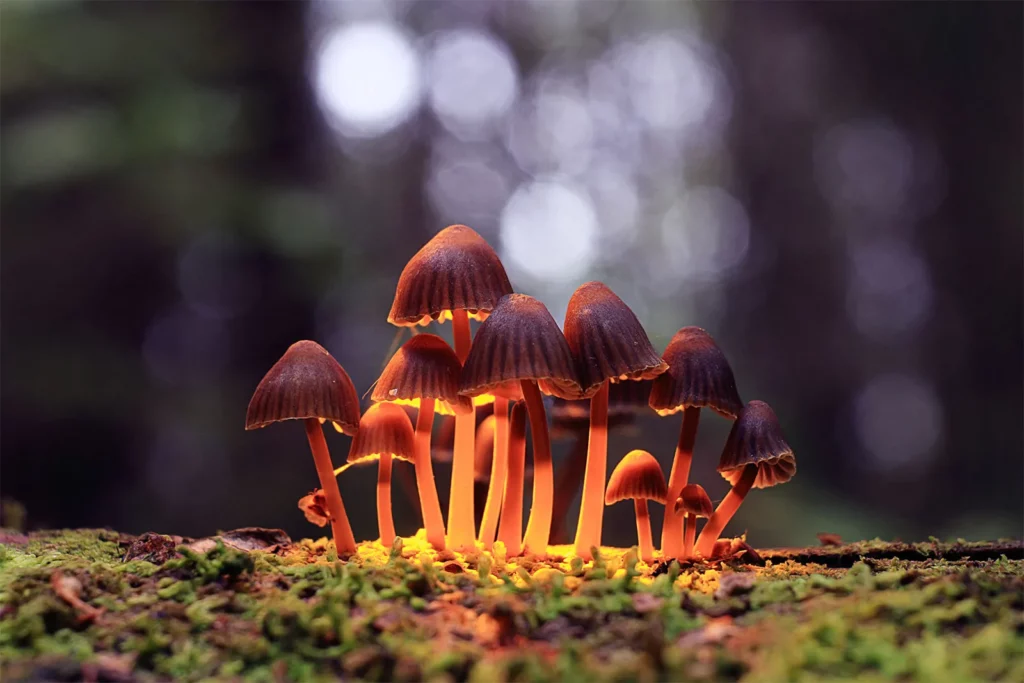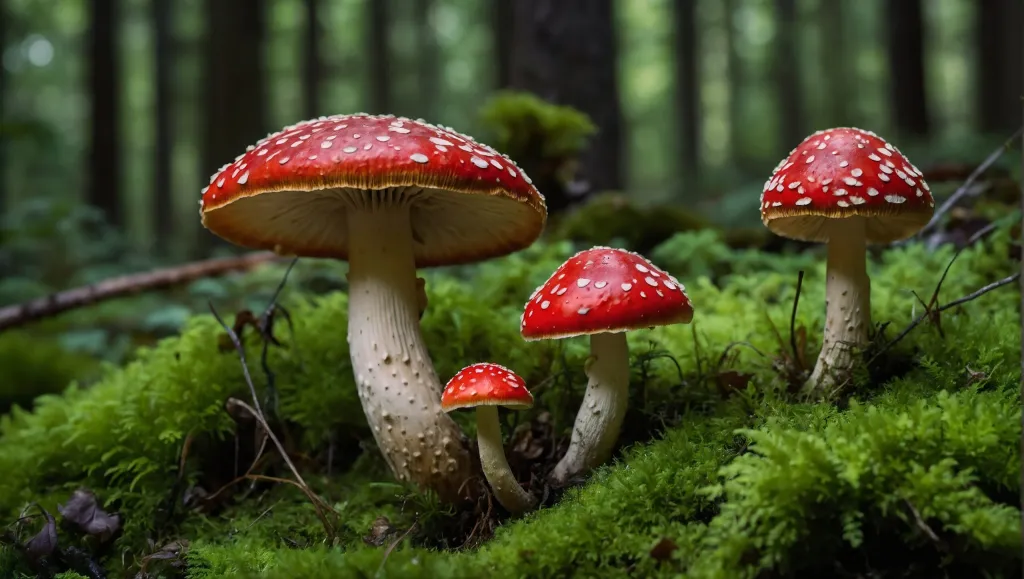Introduction
The conversation around mental health treatment is changing rapidly, and at the center of this transformation is an unlikely candidate—magic mushrooms. Known for their psychedelic effects and centuries-old ties to spiritual rituals, these fungi are now gaining serious attention from the scientific and psychiatric communities. Researchers, therapists, and patients alike are asking the same question: Could psilocybin—the active compound in magic mushrooms—revolutionize psychiatry?
In this article, we’ll explore the science behind psilocybin, examine its potential as a psychiatric tool, look into clinical trials, and consider the challenges that lie ahead in integrating it into mainstream mental health care.
Understanding Psilocybin and Its Effects
Magic mushrooms contain psilocybin, a naturally occurring psychedelic compound. When ingested, the body converts psilocybin into psilocin, which interacts with serotonin receptors in the brain, particularly the 5-HT2A receptor. This interaction is believed to cause changes in mood, perception, and cognition.
But beyond the typical “trip” associated with recreational use, psilocybin appears to do much more. It seems to disrupt rigid neural pathways and allow the brain to form new, healthier connections—an effect that could be especially useful in treating mood disorders and addiction.
The Mental Health Crisis: Why Traditional Treatments Are Not Enough
Anxiety, depression, PTSD, and addiction are on the rise globally, yet traditional psychiatric medications—like SSRIs, benzodiazepines, and antipsychotics—come with limitations. They can take weeks to work, have side effects, and are not effective for everyone.
Moreover, many mental health conditions are chronic and treatment-resistant. For example, treatment-resistant depression affects up to 30% of patients, leaving psychiatrists with limited tools. This growing mental health crisis has led researchers to seek novel approaches, and psilocybin has emerged as one of the most promising.
What the Research Says: Promising Results from Clinical Trials

The renaissance in psychedelic research began in earnest during the early 2000s. Today, institutions like Johns Hopkins University, Imperial College London, and NYU Langone Health are leading the way in psilocybin research.
Key Studies and Findings:
- Depression: A landmark 2020 study by Johns Hopkins showed that psilocybin-assisted therapy produced rapid and sustained reductions in depressive symptoms, with effects lasting weeks to months after a single dose.
- End-of-Life Anxiety: Trials involving terminal cancer patients found that one or two psilocybin sessions reduced anxiety and depression, helping patients find peace and improve their quality of life.
- Addiction: Small-scale studies on smoking cessation and alcohol use disorder suggest that psilocybin may help reframe behavior and reduce addictive patterns.
- PTSD: While MDMA is currently more prominent in PTSD research, psilocybin is being explored for its ability to help patients process trauma with reduced emotional reactivity.
These studies are small but remarkably consistent in their results, prompting the FDA to grant “Breakthrough Therapy” designation to psilocybin for depression—a status meant to expedite the development of especially promising treatments.
How Psilocybin Therapy Works: More Than Just a Pill
Unlike traditional psychiatric medications, psilocybin therapy is not a daily treatment. Instead, it is typically administered in controlled, guided sessions that last several hours. Patients prepare for the experience with a trained therapist, who also remains present during the session and helps integrate the experience afterward.
This set and setting—the mental state and physical environment—are critical to therapeutic success. Psilocybin therapy is as much about the experience as it is about the molecule itself. Patients often describe feelings of interconnectedness, emotional release, and deep insight, which help them shift entrenched thought patterns and improve mental health.
Why Psilocybin Works Differently from SSRIs
Selective serotonin reuptake inhibitors (SSRIs) work by increasing serotonin levels over time, but they do not directly address the underlying cognitive patterns that contribute to mental illness. Psilocybin, on the other hand, appears to act as a catalyst for deep psychological insight, while also fostering neuroplasticity—the brain’s ability to form new neural pathways.
Brain imaging studies reveal that psilocybin reduces activity in the default mode network (DMN)—a brain region associated with self-referential thinking and rumination. This may explain why people often feel a “reset” or breakthrough after a psilocybin session, even when other treatments have failed.
The Shift in Psychiatric Thinking
The success of psilocybin in clinical trials is prompting a paradigm shift in psychiatry. Rather than viewing mental illness strictly through the lens of neurotransmitter imbalances, psilocybin research encourages a more experiential, neuropsychological, and integrative approach.
Psychiatrists and psychologists are beginning to consider that healing may come not just from suppressing symptoms, but from facilitating meaningful emotional experiences and new perspectives—something psilocybin seems uniquely equipped to do.
Current Limitations and Concerns
Despite the excitement, there are significant challenges to overcome before psilocybin can become a mainstream psychiatric tool.
1. Legal and Regulatory Barriers
Psilocybin remains a Schedule I substance in many countries, including the United States, meaning it is considered to have no accepted medical use and high abuse potential. This status makes research difficult and restricts access for patients.
2. Therapist Training and Infrastructure
Psilocybin therapy requires specialized training and safe clinical environments, which are not yet widely available. Without proper support, psychedelic experiences can lead to anxiety or confusion.
3. Individual Variability and Risks
Psilocybin is not suitable for everyone. People with a history of psychosis, bipolar disorder, or certain personality disorders may be at increased risk of adverse effects. Careful screening is essential.
4. Cost and Accessibility
Because psilocybin therapy is currently only available through clinical trials or underground therapy, it remains inaccessible to most people. Widespread adoption will require insurance coverage, policy reform, and professional regulation.
The Road Ahead: What’s Next for Psychedelic Psychiatry?
While psilocybin is not yet available as a standard treatment, the path forward is becoming clearer. Several biotech companies and nonprofits are working on bringing psilocybin-assisted therapy to market, and Phase III trials are already underway.
Some regions are also starting to legalize or decriminalize psilocybin:
- Oregon became the first U.S. state to legalize psilocybin therapy in supervised settings.
- Colorado followed with broader decriminalization and support for therapeutic use.
- Australia recently approved psilocybin for treatment-resistant depression, under strict medical supervision.
As laws begin to reflect emerging science, we may see psilocybin integrated into psychiatric care within the next 5–10 years.
Also Read: Magic Mushrooms: History, Culture, and Modern-Day Use
Conclusion
Magic mushrooms were once dismissed as a symbol of counterculture, but today they stand at the forefront of psychiatric innovation. With mounting evidence supporting their therapeutic value, psilocybin has the potential to transform how we treat mental health disorders—offering hope to those for whom traditional treatments have failed.
But psilocybin is not a magic bullet. It requires careful implementation, professional guidance, and thoughtful policy. Still, its promise is too great to ignore. If research continues to yield positive results, magic mushrooms may not only change individual lives—they could redefine psychiatry as we know it.

